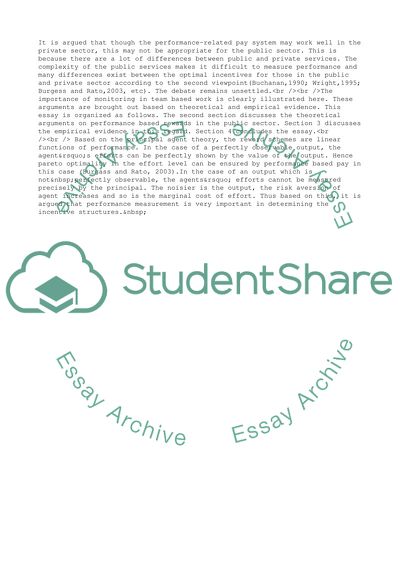Cite this document
(Performance-Based Reward Systems are Unsuitable for the Public Sector Essay, n.d.)
Performance-Based Reward Systems are Unsuitable for the Public Sector Essay. Retrieved from https://studentshare.org/management/1743110-performance-based-reward-systems-are-unsuitable-for-the-public-sector-discuss
Performance-Based Reward Systems are Unsuitable for the Public Sector Essay. Retrieved from https://studentshare.org/management/1743110-performance-based-reward-systems-are-unsuitable-for-the-public-sector-discuss
(Performance-Based Reward Systems Are Unsuitable for the Public Sector Essay)
Performance-Based Reward Systems Are Unsuitable for the Public Sector Essay. https://studentshare.org/management/1743110-performance-based-reward-systems-are-unsuitable-for-the-public-sector-discuss.
Performance-Based Reward Systems Are Unsuitable for the Public Sector Essay. https://studentshare.org/management/1743110-performance-based-reward-systems-are-unsuitable-for-the-public-sector-discuss.
“Performance-Based Reward Systems Are Unsuitable for the Public Sector Essay”. https://studentshare.org/management/1743110-performance-based-reward-systems-are-unsuitable-for-the-public-sector-discuss.


